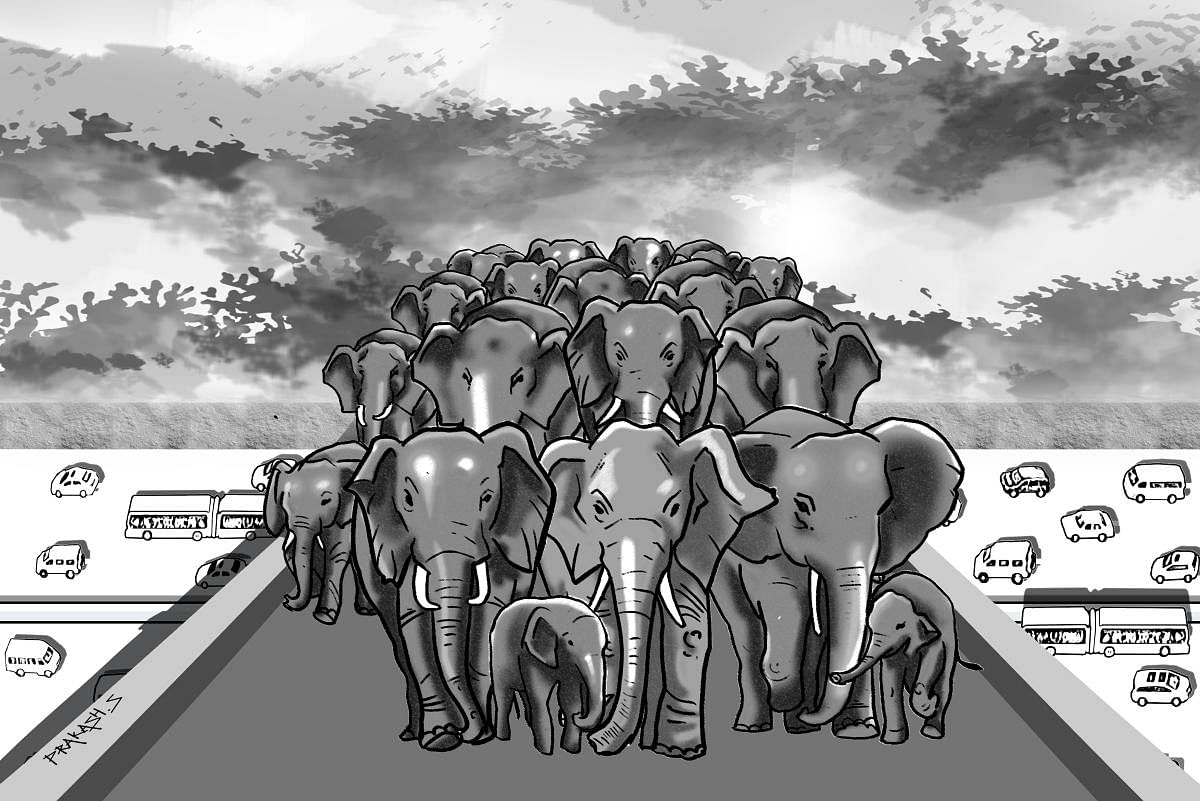
As the permafrost thaws in the ensuing climate chaos, men are eager to bag mammoth tusks and make the quick buck in the vast Russian expanse. A gold rush there for many.
When human greed exhumes dead mammoths from their frozen graves, their distant cousins here must be sighing at the impending doom that may befall them in the near future, if things are to go on as they are.
A decade ago there were a million elephants in the subcontinent, according to research. With a 98% decline in their numbers to 27,000-odd wild elephants now, any thinking creature would spare a thought.
Imagine if human beings were to be reduced to two per cent of the current population in a span of 10 years. Seems highly unlikely.
Nevertheless, a great thought from the elephant’s perspective. Because, that’s what we have done to these enigmatic creatures. And we still go about our lives as though nothing has happened.
Elephants mourn their dead. Surely, an indication that they value individuality. Indeed they are entitled to life and ethics that govern life henceforth. Perhaps even more than us humans.
At present, the geography that we inhabit, however, happens to be where Asian elephants are found in their highest density. So, we have all the more reason to protect them. To make sure they don’t become mammoths sooner.
There’s talk of building an overpass for elephants not far away from the city on the Bengaluru-Kollegal highway. A species building infrastructure for another. This could be quite tricky. We cannot box them elephants in anymore. Period.
Let’s look at the thoughtless infrastructure that we are building for ourselves at the moment in our cities instead, now extending to our forests too as we are seeing a dilution of forest laws of late.
We must in fact back away, if there shall be any progress for long-term conservation of elephants. Even the thought of building an overpass is something that requires much deliberation.
If possible, the idea must be dropped. Traffic must be diverted from the region and the area declared protected. So as to not venture into overpasses and such. Especially for wild elephants. This would be the wiser thing to do. No doubt.
The intelligent animal that it is, from the time the elephant has interacted with humans, it has somehow understood our nature.
However, of overpasses, the Wildlife Institute of India has laid down guidelines that shall be followed in case all else fail and comes to building an overpass as the last resort. According to the institute, the overpass must not be the option, should the area be topographically unfit.
According to a WWF study released last week, the IPBES report which earlier said a million species risk extinction notwithstanding, there has been a 53% decline in forest-dwelling species from 1970 to 2014 across the globe. Now this means a lot to a bio-diverse region like the Western Ghats, where probably more than half of the wildlife populations may have been compromised during the period.
We must explore ways that put the elephant first in its habitat which we have encroached upon so far. The mitigation measures for species loss will work only if we adopt an elephant-first-attitude.
So that instead of building an overpass, we would abandon the idea of the overpass itself, and perhaps completely ban traffic in the area.
Moreover, the impact the elephant leaves in its habitat is overlooked. Primarily though, we must see ourselves as one of the luckiest peoples who still share habitat with such a formidable creature. A recent research shows puddles formed by jumbo footsteps sustain amphibian species. Frogs raise a family in such a puddle.
Globally viewed as a biodiversity hot spot, in the Western Ghats, we are still more or less unaware of the intricate ecological framework the pachyderms have established over time.
Our knee-jerk solutions such as ‘developing contraceptives for wild animals’, an idea that appeared somewhere recently, to check rising human-animal encounters, are outright absurd.
Climate crisis and the resultant ecological imbalances are forcing species migration. Whales and sharks are turning up in spots where they are least likely observed.
At least, in the beginnings, localised movement in search of pastures due to unavailability of space, thanks to poaching and frequent conflicts with humans, elephants must be seeking ways out too, to escape erratic environmental changes that unravel.
Ideally, elephants must find their way rather than be shown their way by us humans. More importantly, when errant climate triggers all sorts of anomalies, coaxing the jumbos to an area we think is appropriate may not be the right thing to do. It can result in total crisis mismanagement.
To top it, this is not the first time humans have driven a species to extinction.
That the elephant is a godhead, essentially a cultural marker in these parts, should shake us off our slumber and must put us back in perspective, if this magnificent animal, that we still have so much to learn from, is to survive.